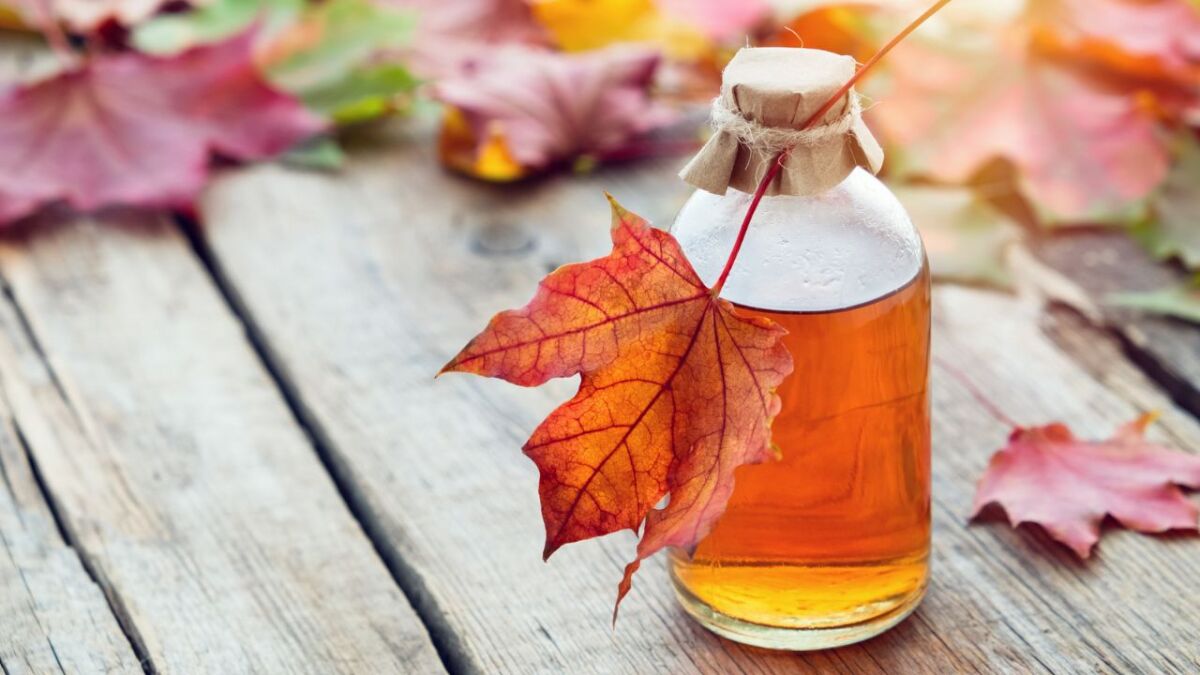
The liquid gold of the trees – 16 trees that you can use for syrup
👉 The key facts from this guide
- Discover 16 trees suitable for homemade syrup, in addition to the well-known maple syrup.
- Maple syrup is rich in vitamins, minerals, and antioxidants and is obtained from various types of maple trees.
- Birch sap is less suitable for syrup, but rich in vitamins and minerals and can be used for various purposes.
- Ash, plane trees, and walnuts are other trees from which juice can be obtained.
- Observe legal regulations and responsible tapping to avoid damaging trees.
- The best time for tapping is when the water is rising in the trees, usually between February and April.
Are you tired of always finding the same types of maple syrup at the supermarket?
Would you like to try something new, but don't know which trees are suitable for syrup?
Here is the solution to your problem.
In this guide, I will introduce you to 16 trees that you can tap for delicious, homemade syrup.
From birch to ash to walnut, I have something for every taste.
So, why wait any longer? Let's discover the liquid gold of trees and expand your syrup horizon.
Is there only maple syrup?
Today, I want to show you how richly Mother Nature has gifted us if we know how to take advantage of these gifts.
As the title already reveals, this text is about how to learn to distinguish trees that produce sap for syrup. I also want to take the opportunity to debunk a myth along the way.
Myth: There are only a handful of trees from which syrup can be extracted.
This statement is completely unfounded. It's as true as the Earth being flat.
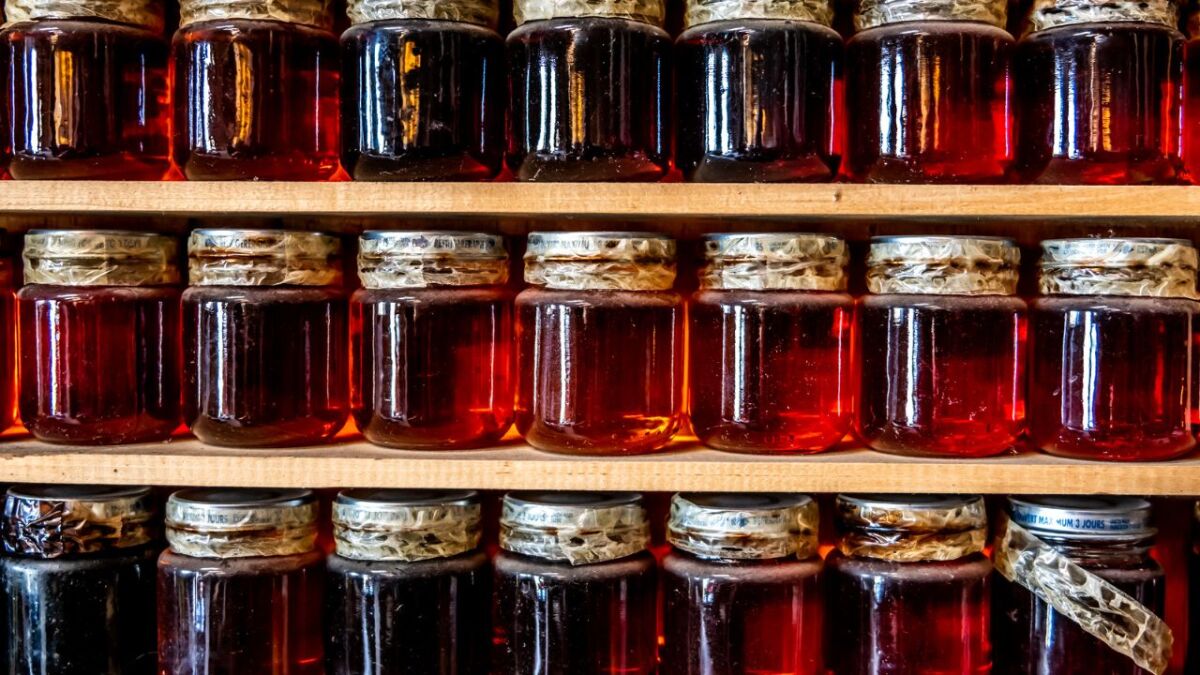
Did you know that there is more than one type of tree that can provide us with sap for making syrup?
Most people only know about maple syrup, but they don't know that
- if the trees belong to the same family, maple trees are not all the same?
- each tree sap is different?
There are differences in nutrient and sugar content, and the composition ultimately determines how rich your resulting syrup will be.
So, you can get an idea, I've put together a small overview for you that teaches you to recognize the differences and use them for yourself.
Here are 16 trees from which juice can be obtained, from which you can make syrup. In the end, you will also learn how to make syrup and whether it is allowed in Germany.
Maple Trees
As mentioned above, there are several types of maple trees.
Not all of them are suitable for the production of maple syrup, due to their low sugar content and some geographic circumstances.
But what makes maple syrup so important for us, and why is it mentioned on a survival website?
The answer to this legitimate question is its nutritional value and its positive effect on us humans. Maple syrup contains tons of vitamins, minerals, and antioxidants.
It's worth giving the topic its appearance for that reason alone.
The harvest time for maple syrup is always at the end of winter, from the end of January depending on the variety, until the end of March.
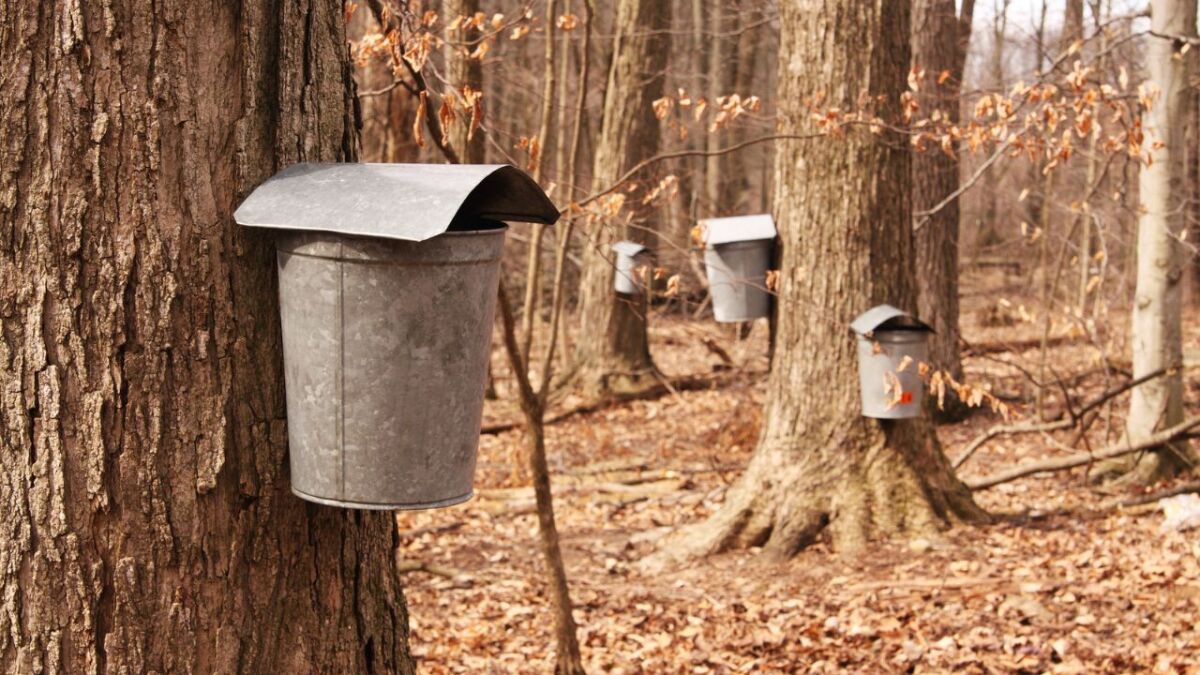
1. The Sugar Maple
You probably know the Canadian national flag, on which the outline of a red maple leaf is visible. This is the favorite of Americans, the sugar maple.
It produces the substance from which an American dream, the real Canadian maple syrup, is obtained.
Its name already indicates that the sugar content is very high and therefore ideal for syrup production. The sugar maple belongs to the family of soap berry plants and is rather rare in our region.
Since its five-pointed leaves turn a beautiful orange to deep red color in autumn, it is increasingly becoming a popular ornamental tree in parks and gardens.
Here are some facts about the sugar maple:
- Not only is the syrup a bestseller, but also the wood of the sugar maple is very popular in the furniture industry.
- The tree can grow up to 40 meters high if allowed.
- Its fruits bear the typical wings and its flowers, which can be seen from April to May, shine in a bright yellow.
The regular price of real maple syrup can be explained more accurately if you know the amount of sap needed for one liter of syrup.
Approximately 40 liters of sap are needed to make 1 liter of maple syrup.
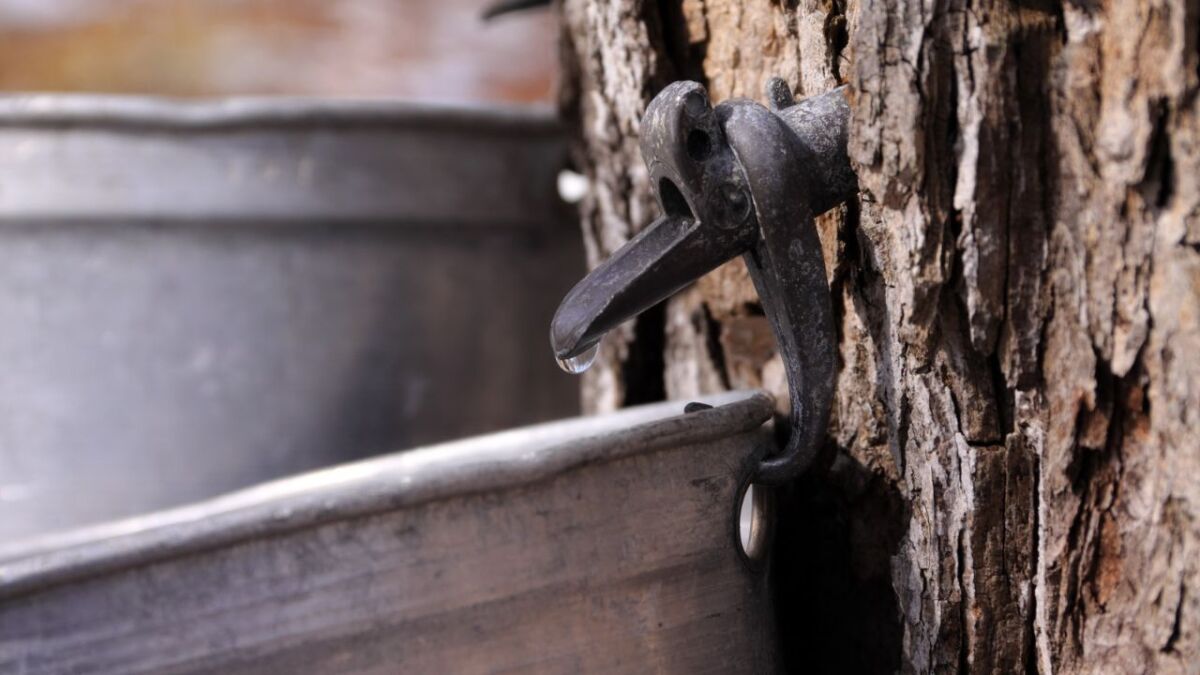
That in turn explains why the stuff is so expensive in the trade. Canadian maple syrup is fine, spicy, and delicious, and I have not met anyone who dislikes it.
The use of maple syrup as a sweetener is traditionally deeply rooted in America.
2. The Black Maple
This maple is a subspecies of the sugar maple and differs primarily in its leaf shape.
While the real sugar maple has five-pointed leaves, the tips of the leaves of the black maple are arranged in three points. The black maple likes to grow near a lot of water, which is why it is usually found in larger stands around lake shores.
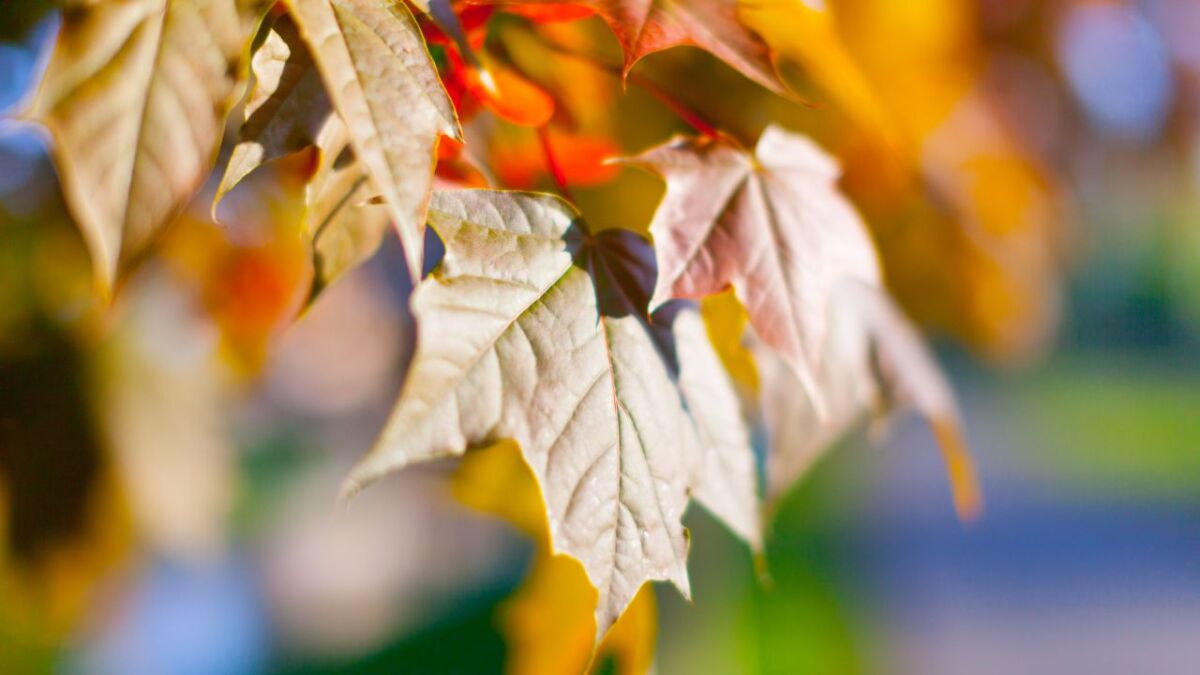
Its sugar content comes close to that of sugar maple. Alternatively, it is tapped when there is no sugar maple at hand or the last harvest is not long enough ago. In terms of taste, black maple syrup hardly differs from real sugar maple.
The word "black" in its name is due to the bark on the trunk, which has a grayish-brown to blackish color. All in all, black maple is often used as an alternative to sugar maple because the syrup is just as flavor-intensive as that of sugar maple.
3. Red Maple
This representative of the maple family is a true survivor. It is predominantly found in America and copes equally well with swampy terrain and sandy clay soils.
It owes its name to the scarlet fall foliage that makes it shine from a distance. Anyone who has seen the sight of these trees in autumn, when they cover entire stretches of land with their red leaves, will not forget this spectacular sight anytime soon.
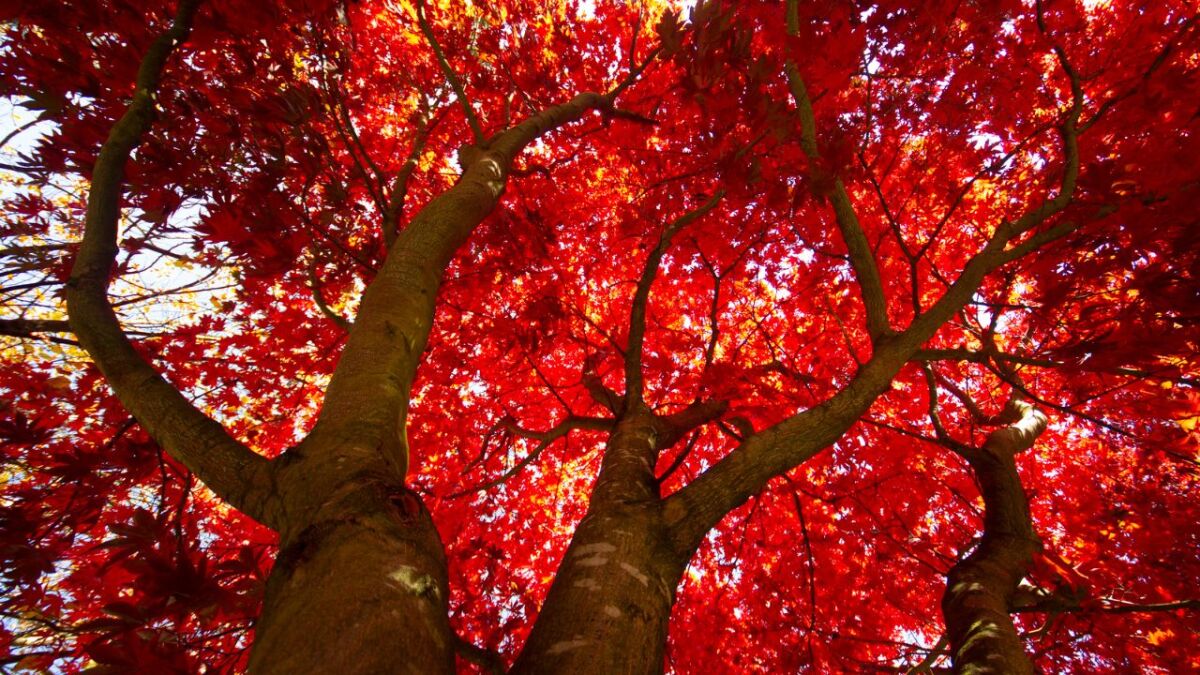
This type can also be tapped and used to make maple syrup.
As its sugar content is not as high as in the two previous types, the processing process is slightly different, and the syrup tastes significantly different.
Since it is not as heavily marketed and advertised as its two counterparts, it is also not sold at such a high price and belongs to the cheaper variants.
Its wide distribution also plays a major role. So, the red maple is not only a dreamlike sight in autumn, but also a real insider tip if you want to make syrup for your use.
However, it should be noted that tapping must absolutely take place before the tree blooms. If the tree starts budding its flowers, the maple sap will become bitter. Additionally, the red maple blooms earlier than its counterparts. So good timing is the key to a delicious syrup.
4. The Silver Maple
When talking about a silver maple, it refers to its distinctively silver shimmering bark, which beautifully contrasts with its reddish leaf coloration. It is one of the most common maple species found in America.
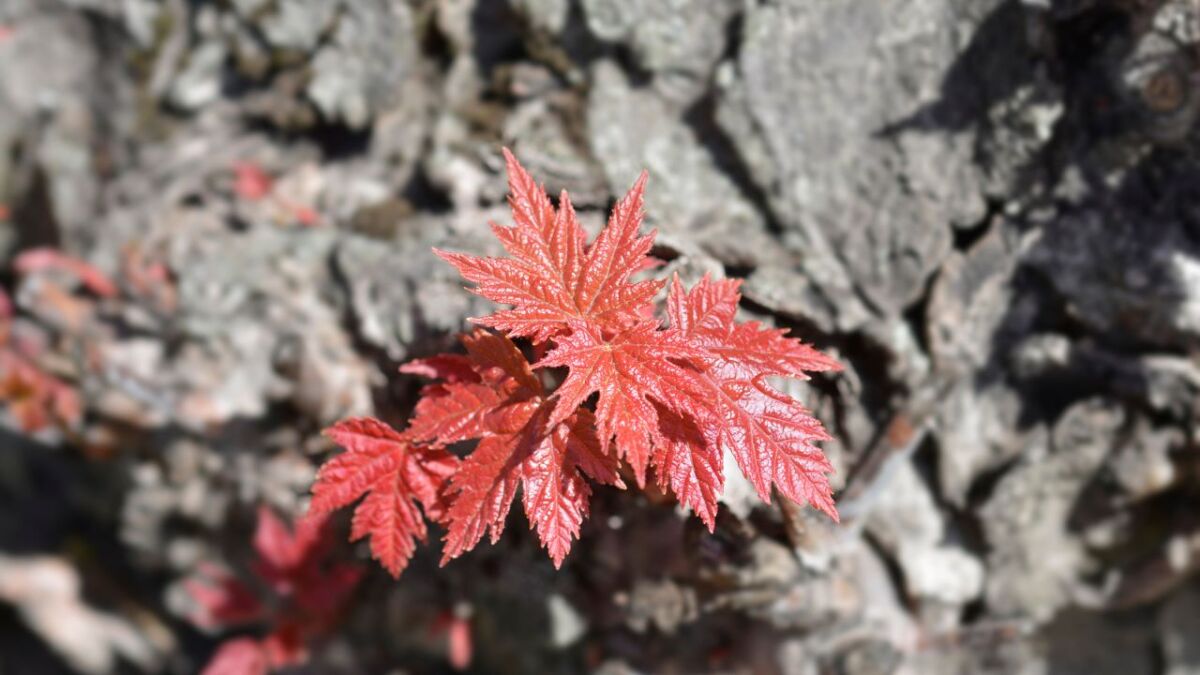
The silver maple can grow on any terrain, doesn't get particularly large, and roots quite shallow. It can be used for syrup making, but has a very low sugar content, resulting in a syrup that is somewhat thin in flavor.
It is harvested in the very early spring (February/March). At a later time, the sap will also turn bitter. The silver maple's bark is soft.
Its wood is not particularly useful either, as it is more brittle than other maple trees. Storms and severe weather conditions do not favor the tree, and it's not uncommon for it to uproot or shed several branches during a storm.
5. The Canyon Maple
The sap of the Canyon Maple, depending on local conditions, can be very sweet and sticky.
The tree mainly grows in northern latitudes, and can survive in a wide range of soils. It is not especially picky about whether the soil is chalky or clayey.
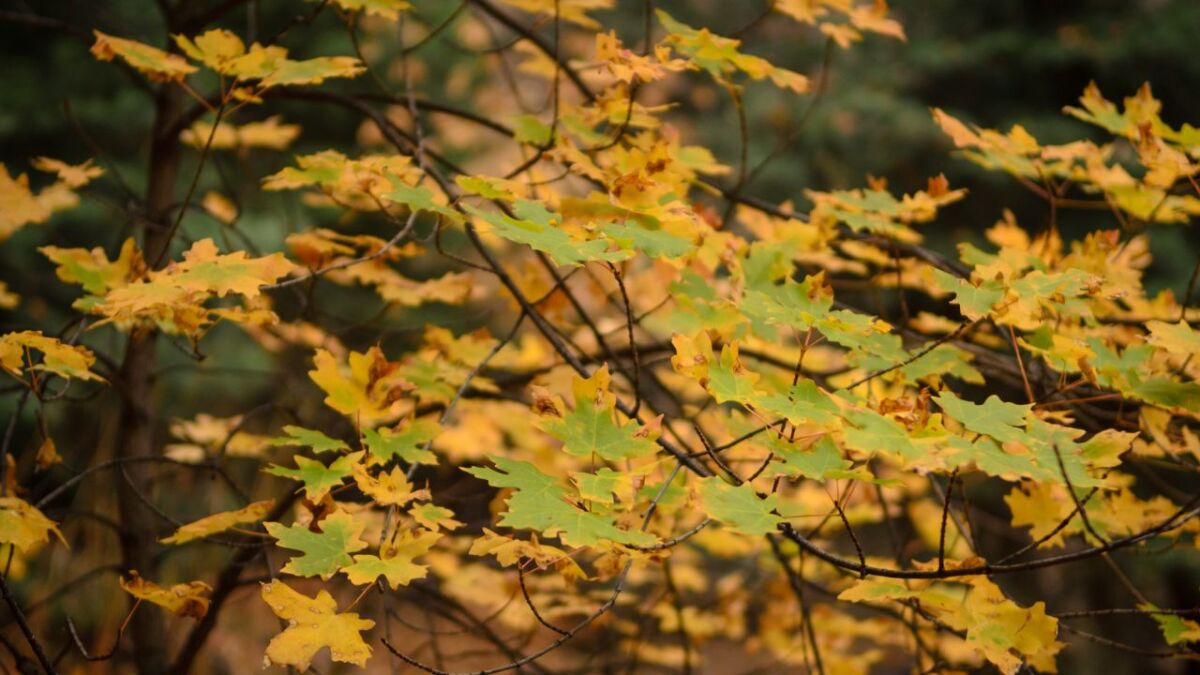
However, it does provide an excellent foundation for juice extraction and a flavorful syrup when harvested in the right places.
Unfortunately, for us Europeans, it is inaccessible since it is mainly native to North America, and most of us are unlikely to fly to the States to tap maple trees.
6. The Boxelder Maple
While other maple species tend to grow tall, the Boxelder spreads out. Its crown provides sufficient shade to tired hikers near lakes, rivers, and ponds.
Due to its branches breaking easily, it is not suitable as an ornamental tree for parks and gardens. Another reason is that female trees attract boxelder bugs.
During summer, this is not a big issue, but in winter, no one wants bugs in the house, and the risk is definitely there with a Boxelder Maple near a window. Beetles also like it cozy.
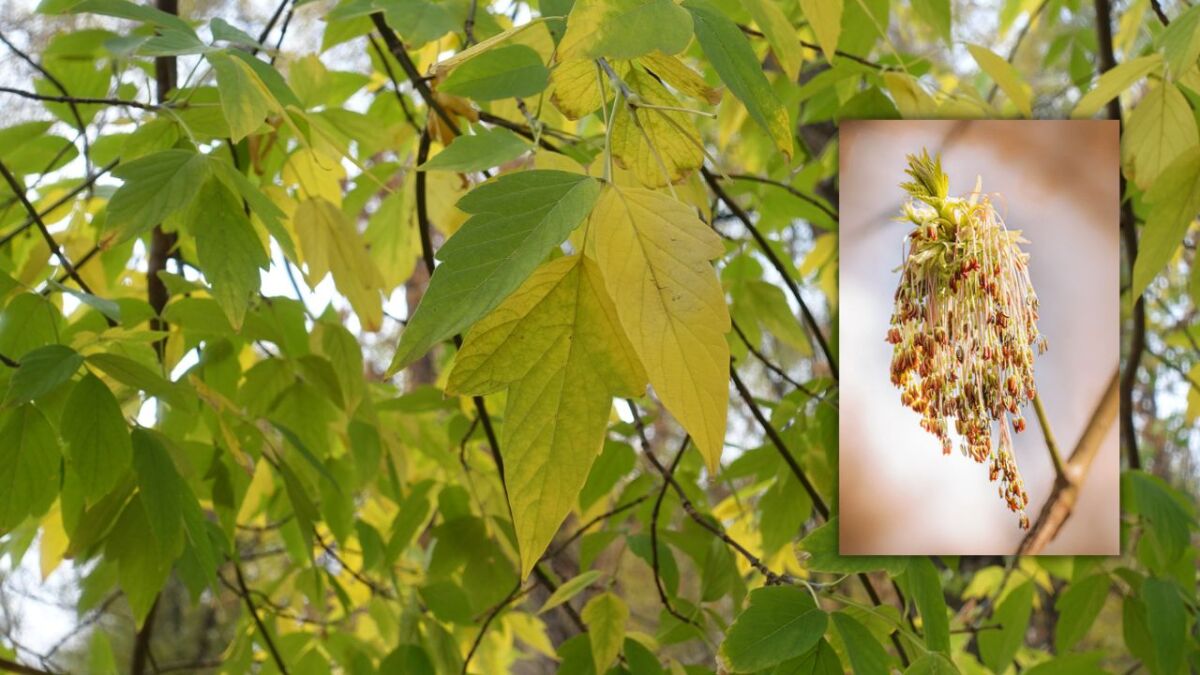
Another reason to avoid planting such a maple in the garden is its fast germination time. Unless you want your maple forest in the garden.
Although the sugar content of the Boxelder is not very high, a usable syrup can be made from it. Especially, when the effort probably won't pay off at a ratio of 60:1 liter.
7. The Big leaf Maple (Oregon Maple)
The next in line of maple trees is the big leaf maple. Its characteristic feature consists of leaves up to 15-30 cm in diameter.
Despite its striking appearance, this maple is only a conditional supplier for syrup, as its sugar content is quite low.
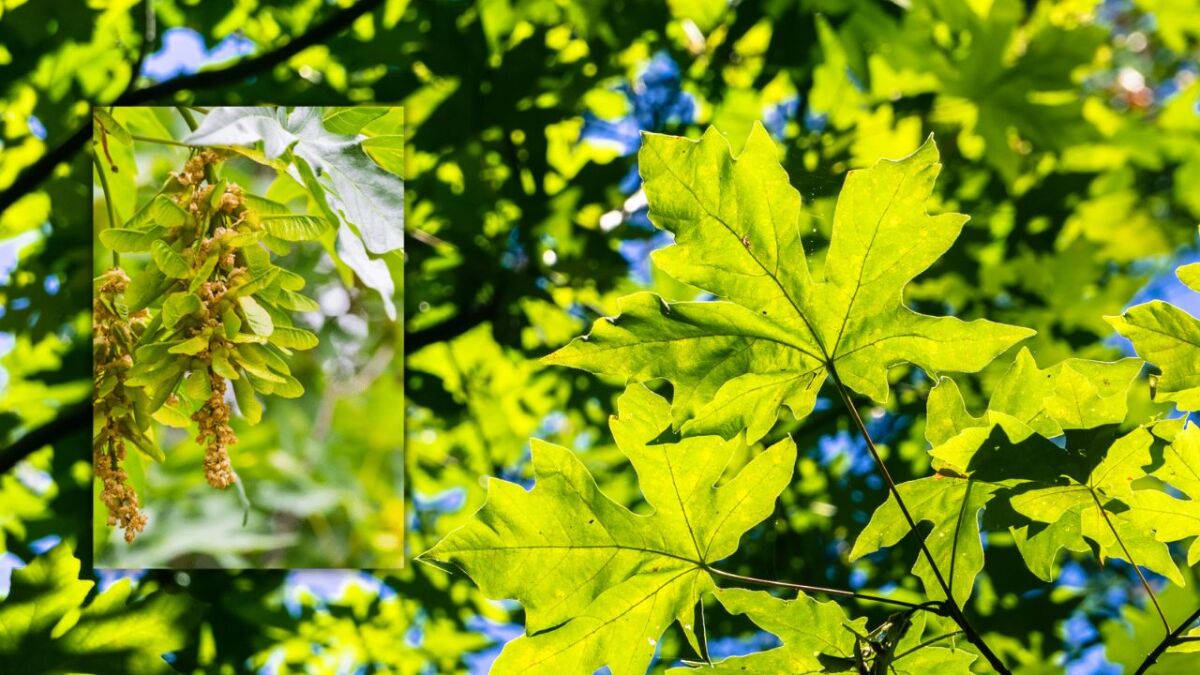
Here it depends, similar to the Canyon Maple, on the location where it grows. Due to climate conditions, it produces more sugar in some places than in others. It can mainly be found along the Pacific coast in western North America.
From Maple to Birch
Now we say goodbye to maple and dedicate ourselves to another tree species that should be known to everyone. Unlike maple syrup, you can use and process the sap from these trees for many things.
We're talking about birch - as you probably guessed.
Here, too, there are different types, and it is worth taking a closer look at their content, place of growth and characteristics.
Although birch sap is less suitable for boiling it down to a syrup, it offers some other advantages. Of course, you can also cook it down to syrup, but the high amount of sap needed for one liter of syrup speaks against it.
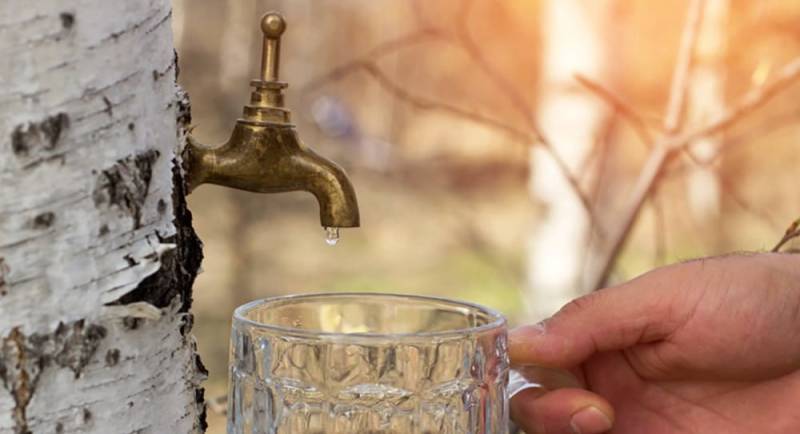
More common methods for processing birch sap are the production of wine, mead, beer, or skincare products. But you can also drink the sap pure.
Important ingredients of birch sap besides vitamin C, B, and A are minerals, antioxidants, amino acids, and protein. Additionally, birch is said to have cancer-fighting and detoxifying properties.
So let's take a closer look at how to get birch sap and which birch is suitable for it.
8. The Paper Birch or Papyrus Birch
This species is characterized by the thinness of its bark, which feels like parchment and can be peeled off in fine layers.
The paper birch is mainly found in cooler areas, as it does not tolerate heat well. Of course, it also occurs with us, but then has a comparatively shorter lifespan, as it only lives for about 30 years.
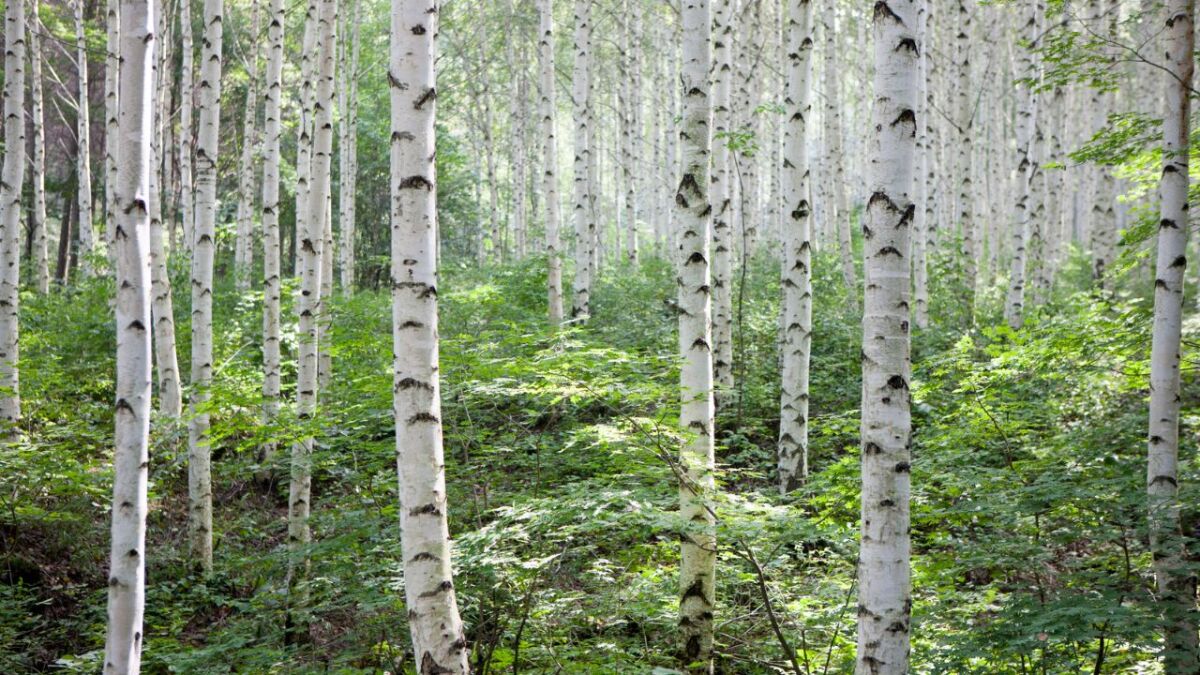
This also implies rapid growth in this case. When growing in its original habitat, North America, it can become significantly older.
Compared to all other birches, its sugar content is high. That's why it's also the only birch that may still make you think of syrup production.
Usually, you'll get just 1 liter of syrup from 160 liters of juice.
9. Yellow Birch or Gold Birch
As with the silver maple, the name of this birch is due to the color of its bark.
It has a golden shimmer, which gives the trees, especially when growing in groups, a gorgeous appearance.
This birch also does not tolerate heat well and prefers cooler regions, which, as with its predecessor, allows it to live longer.
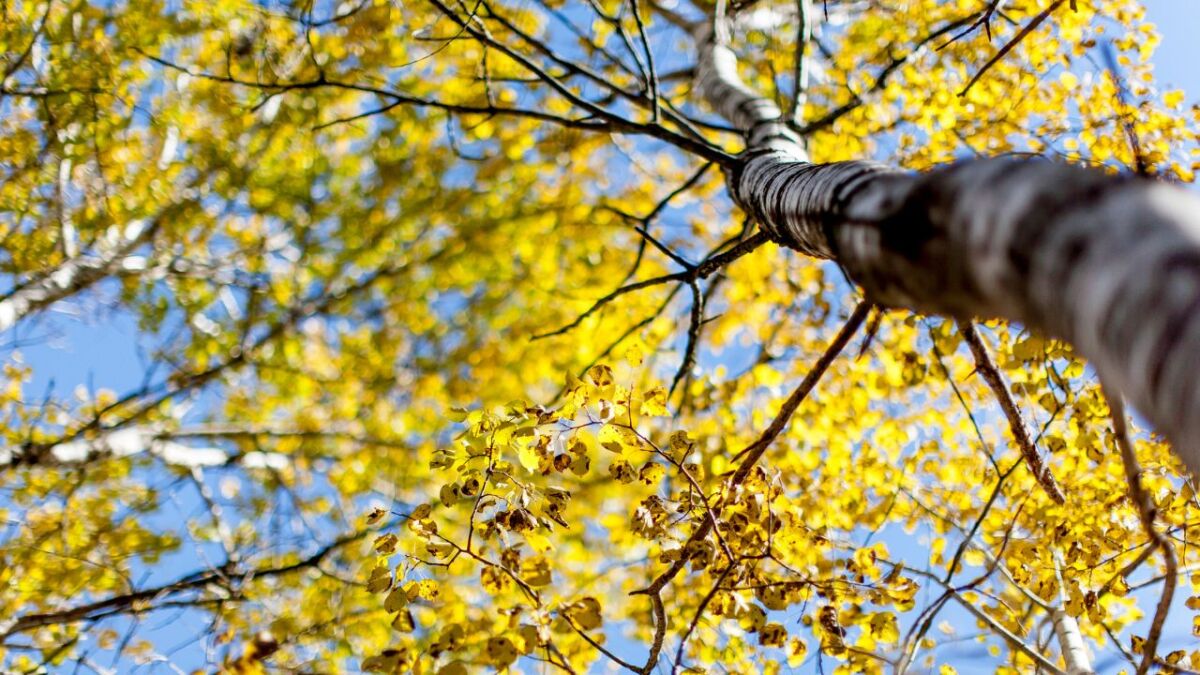
The sap of the gold birch has a very high content of antioxidants, which guaranteed its place in the medicine of Indigenous Americans.
It is sweet, watery, and, like other birch saps, has a refreshing and cooling effect. This makes it particularly popular for external use against sunburn or bruises. It supplies your body internally with protein, vitamins, and minerals.
10. The Grey Birch
This birch is at home everywhere, as opposed to its two predecessors, it can handle almost any type of climate.
It is quite common and can be found all over the world. Its appearance is similar to that of the paper birch. The bark has the characteristic fissured bark of both birches, but is not as easy to peel as with the paper birch.
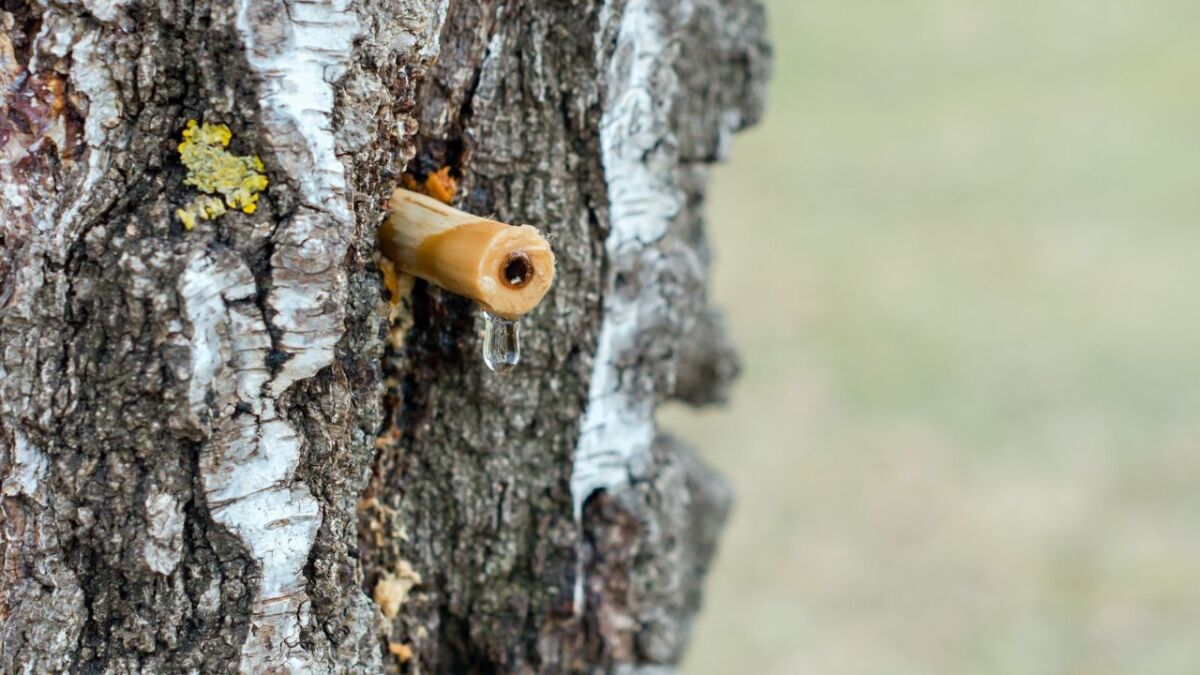
Due to its high occurrence, it can be tapped for juice without hesitation. Harvest time is, like with all birches, from early March before the leaves are formed.
Birches are very juice-rich when the fluid rises in the tree. Therefore, larger wounds should be avoided; otherwise, the trees may bleed. This rule applies not only to the gray birch, but equally to all birches or birch-like trees.
11. Sweet Birch (Betula Lenta)
This is an extremely long-lived specimen. While other birches live at most 50 years, the proven age of the oldest tree of this genus is about 368 years. For a birch, that's almost biblical.
Because its juice flows rapidly, it is perfectly suitable for extracting juice. This birch is right for you if you need larger quantities of birch juice.
In cosmetics, birch water is mainly used in hair care. Why not try out what else can be done with it? You can have longer use of it by fermenting it with sugar to alcohol or by simmering it down.
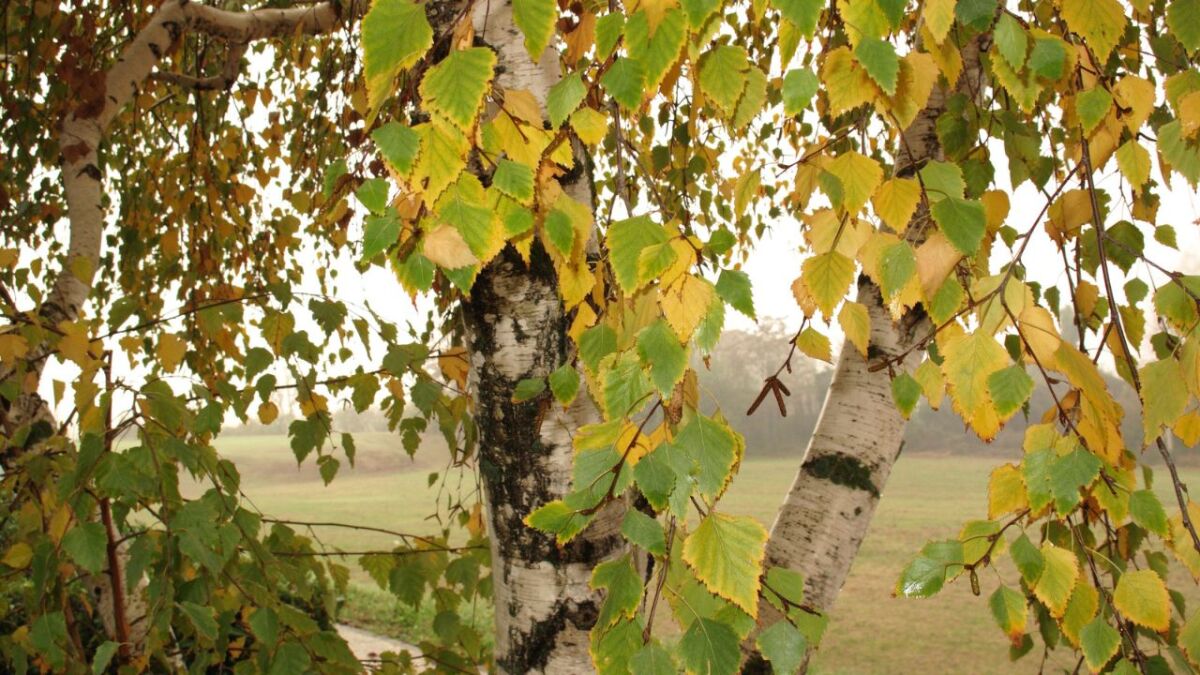
12. Alaska Birch
This time, the name doesn't reveal the color, but rather the origin of the tree. As you already know, most birches prefer cooler climates, and this representative has chosen a place where it could grow ancient.
Whether in the mountains, swamp areas or lowlands - the main thing is that it is pleasant and cold. Under these conditions, the Alaska birch goes into production and its sap, like that of the paper birch, is marketed profitably.
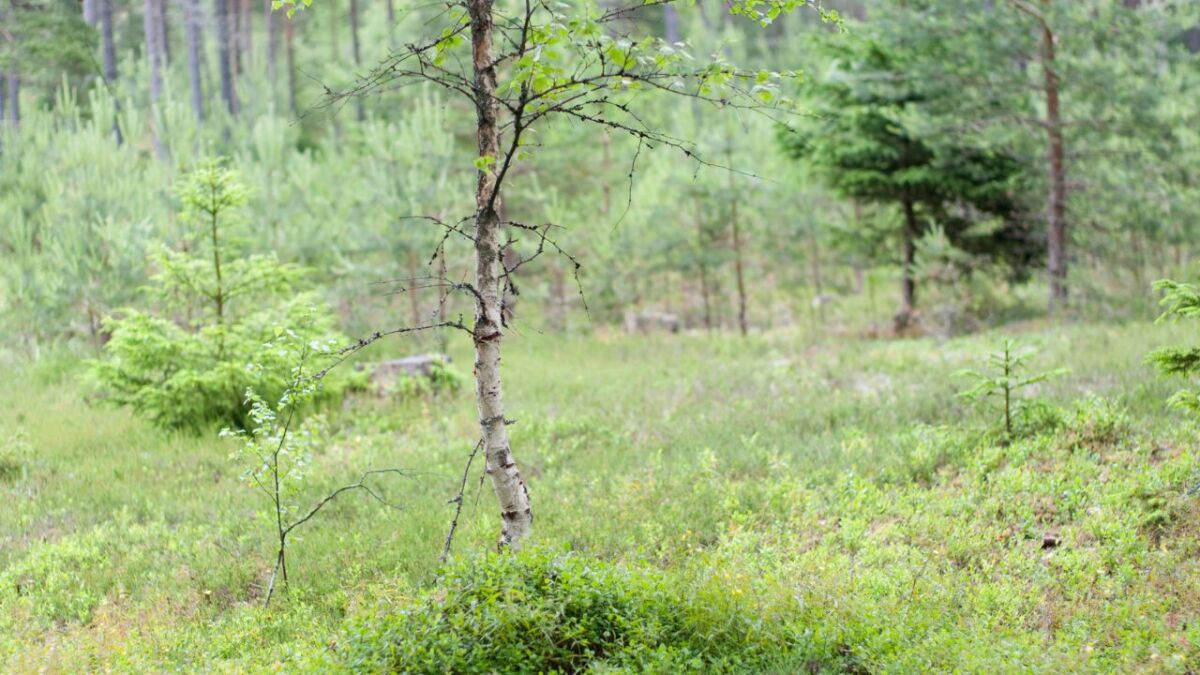
Now, let's move on to the last representative of the birch classification, which you probably wouldn't suspect. This is a tree that you certainly know, but I bet you didn't think it belonged to the birch family.
13. The Ash Tree
Yes, you read that right. The ash tree also produces sap that you can tap. It is just as tasty as that of birches, tastes almost identical and is just as rich in healthy ingredients.
It likes to grow in temperate zones, can withstand rougher or warmer weather without being damaged. Besides, ash trees can grow very old.
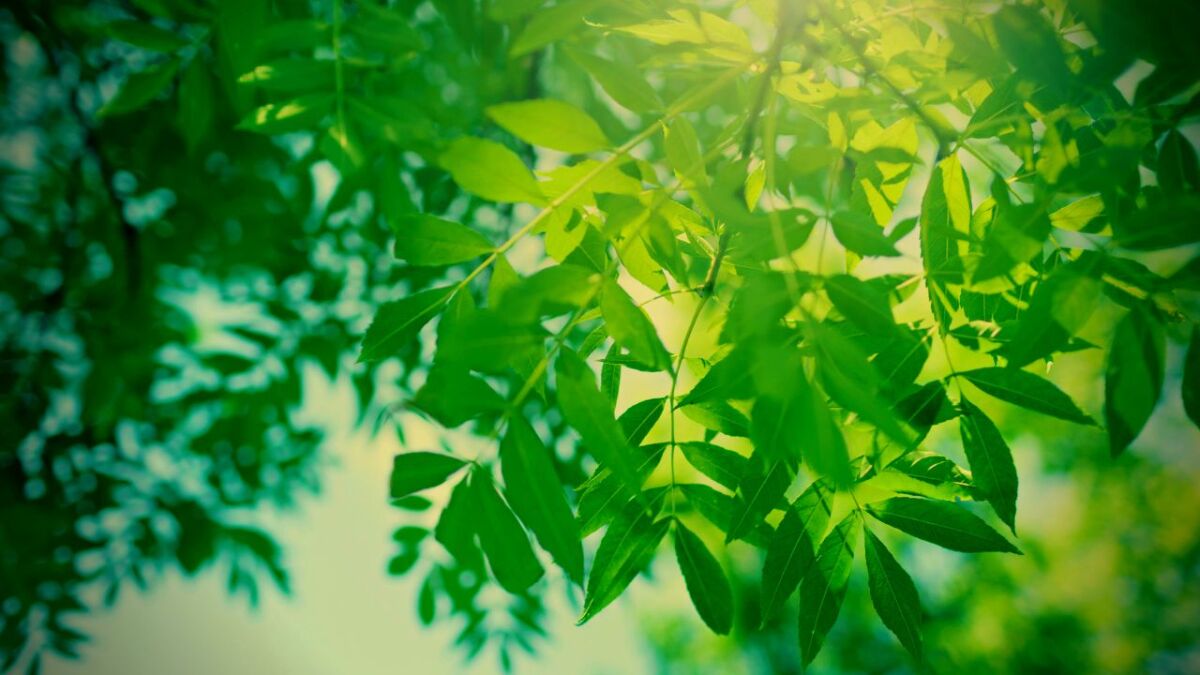
This tree has been sung about in legends. Yggdrasil, the world tree from Norse mythology, was also an ash tree, under whose roots the well of wisdom sprang forth, for whose use the All father Odin sacrificed an eye.
Well, I don't think the sap of the ash tree has a similar effect, let alone requires an eye to tap it.
However, the two ash trees have one thing in common: If a branch is cut off the common ash tree during the time when water is flowing, the life juice sprouts forth like a fountain.
Now, let's discuss some trees that do not belong to either of these two categories, but still supply sap.
There are certainly many others from which you can extract sap, but for now, the trees that I have presented to you should be sufficient.
14. The Plane Tree
One of the last three representatives is known to you as the plane tree.
Its enormous size and silver bark, which it sheds in times of drought or in the fall, make this tree unmistakable. The spiny fruits are also incomparable to others.
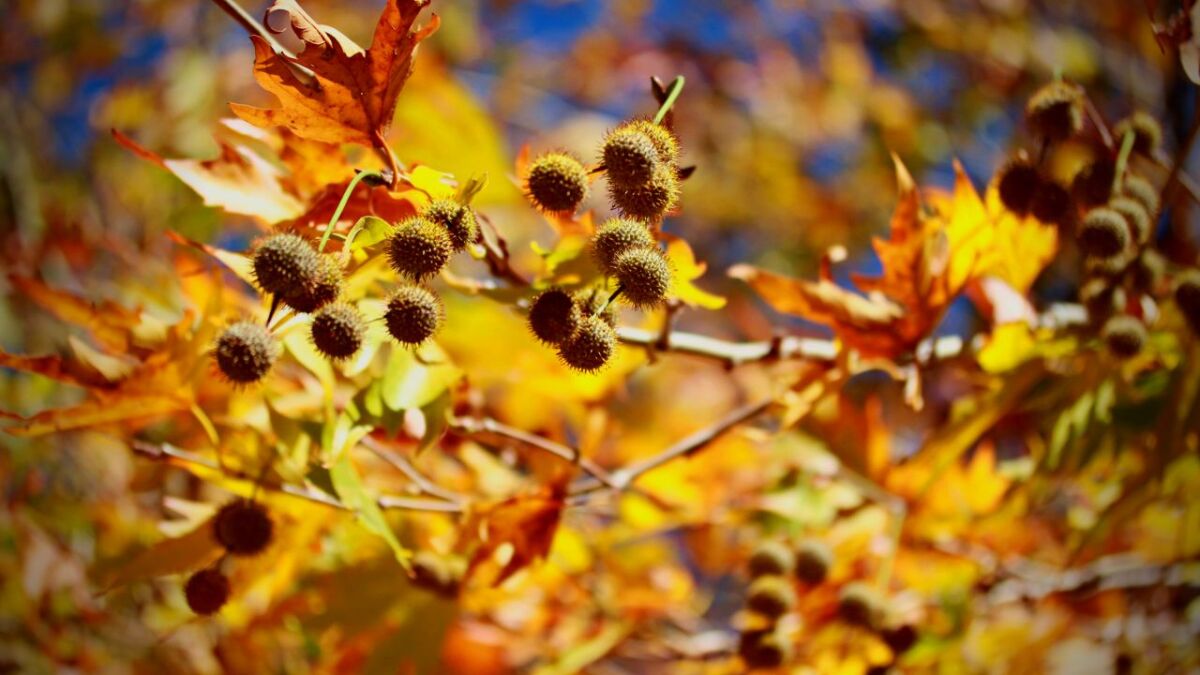
But did you also know that the plane tree is also called the mountain maple? However, it is not even related to the maple. Perhaps the name is because the leaves are quite similar.
You can also tap sap from the plane tree, which can then be further processed. The sap of a plane tree is said to even taste very delicious, like honey or caramel. I haven't tried it myself, but that can be done.
15. The Black Walnut
Another tree that you probably wouldn't expect to produce sap is the walnut, or more precisely, the black walnut.
I mention this specifically because another representative of this species also belongs to the trees that produce sap.
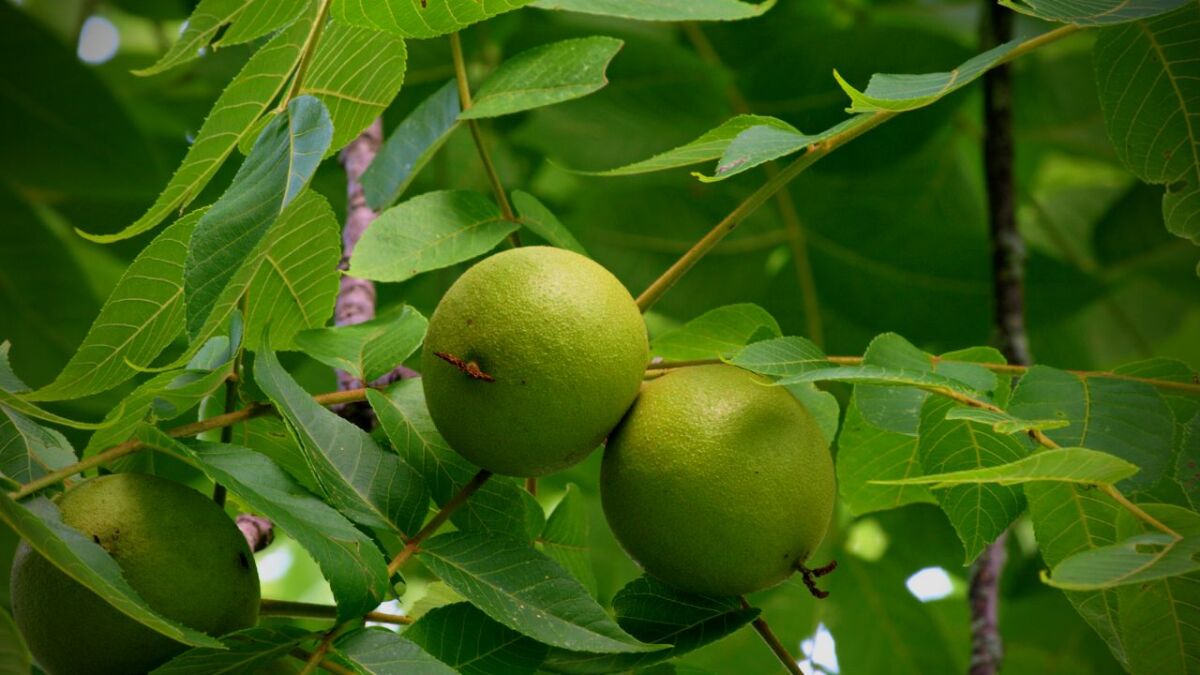
This type produces a juice which can be boiled down to a lightly nutty flavored syrup. The spicy sweetness along with the nuttiness gives it a unique and special taste.
The black walnut is as sweetly productive as sugar maple in terms of its juice. About 40 liters of juice can produce approximately 1 liter of syrup.
However, due to the lower production rates of black walnuts, tapping requires more work. Nevertheless, it should be worth it just for the incomparable taste.
16. The White Walnut or Butternut
Unfortunately, this walnut tree is among those threatened with extinction.
Despite its actual tolerance to adverse weather conditions, it is vulnerable to tree diseases.
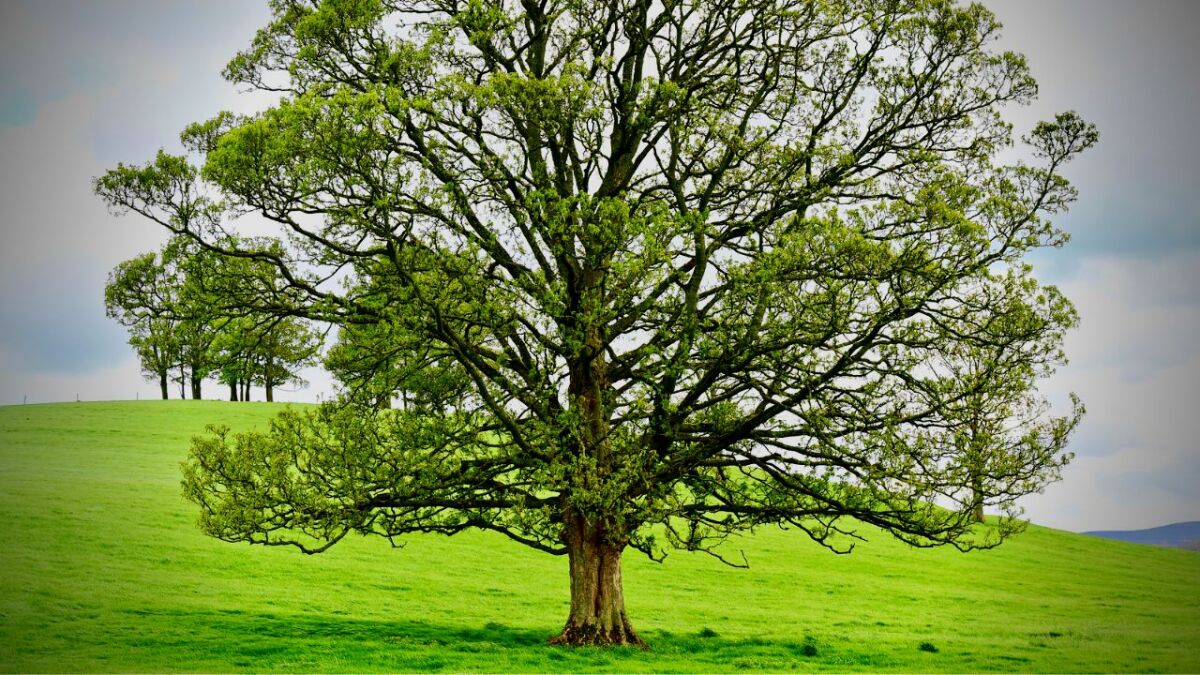
In Canada, they are already listed on a black list, and it is recommended to leave the trees there alone until their population recovers on its own.
The butternut has a two percent sugar content and its juice is said to be delicious.
Nevertheless, the extinction of the tree is not worth it. There are still some healthy specimens in America, but due to the threat of the Thousand Cankers Disease or Butternut Canker, they are also in danger.
As an alternative, the Bart-Nut is recommended. This is a cross between butternut and heart nut, and its population is far from being in danger.
How to make syrup? For example, from maple sap?
Maple syrup is made from the sap of maple trees. Here is a general overview of the production process:
- Harvesting the maple syrup: At the beginning of spring, the sap is collected from maple trees. To achieve this, holes are punctured in the bark of the trees and the sap is caught in bowls or buckets. If you don't have a "tap", you can stick a stick in the hole - the sap will then drip down onto it.
- Cooking the sap: The collected sap is then heated in a large kettle or pot on the stove. This causes the water in the sap to evaporate, increasing the sugar content and making the syrup more concentrated.
- Filtering and cleaning the syrup: After cooking, the syrup is filtered to remove impurities and particles. Then, the syrup is heated again and brought to a final consistency.
- Bottling and storing: Finally, the syrup is bottled in bottles or jars and can either be used immediately or stored for later. Maple syrup should be stored cool and dark to preserve its quality.
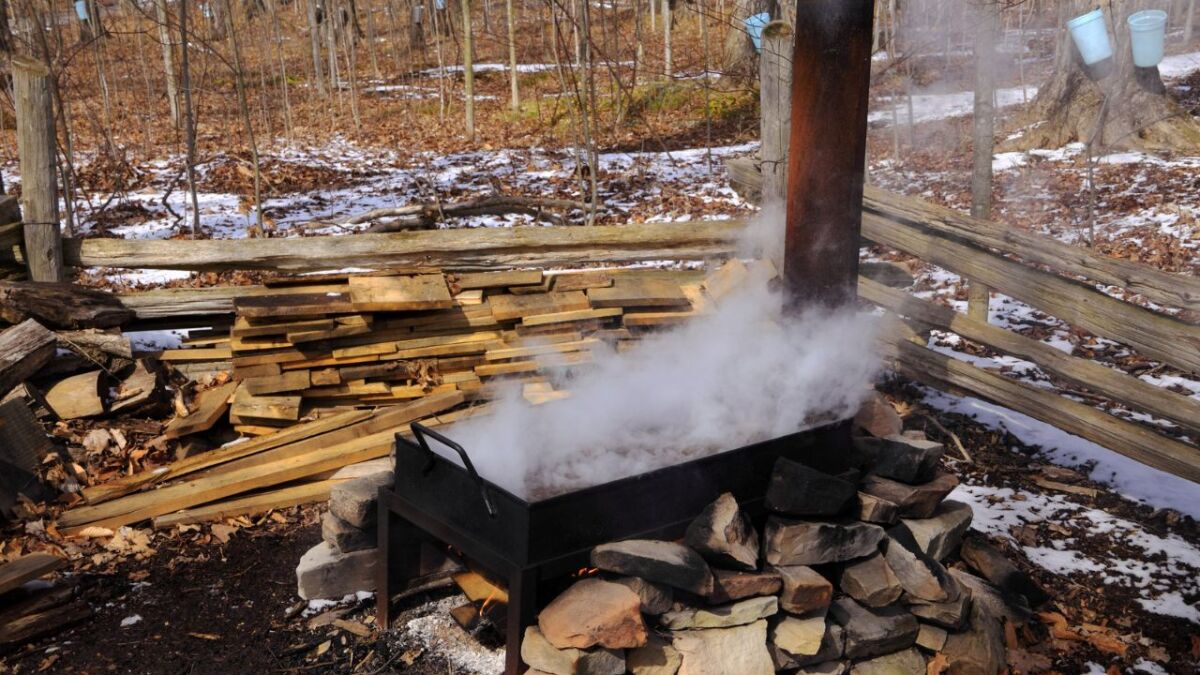
Making maple syrup can be very rewarding. The process of harvesting the sap from maple trees, cooking and filtering the syrup is a wonderful way to connect with nature and create something homemade.
The taste of fresh homemade maple syrup is also incredibly delicious, and there are many ways to use it in the kitchen.
In addition, making maple syrup is a promising way to actively engage with history and culture. Maple syrup has a long tradition in many parts of North America, and its production is closely tied to the culture and life of the people in these areas.
However, it should be noted that producing maple syrup requires some time and effort, and it is important to thoroughly inform yourself about the process or seek guidance from someone with experience.
But if you take the time to make maple syrup yourself, you will be rewarded with a wonderful result and the experience will be unforgettable.
What should I consider when tapping trees for sap?
There are several things you should consider:
- Make sure in advance that the tree from which you want to extract the sap is healthy and strong enough to withstand tapping.
- You must tap the tree in a way that does not damage it. This includes, for example, not tapping the tree too deeply and regularly cleaning the tapping tool to prevent bacteria and fungi from entering the tree.
- Find out in advance about any legal regulations or rules that apply to tapping trees in your state or community. In some areas, for example, there are certain seasons during which tapping trees is allowed or prohibited (more on this later).
- If you want to extract sap on a commercial basis, you must obtain a permit.
The fact is: it is important that you inform yourself thoroughly in advance and act responsibly when tapping trees to extract sap for syrup.
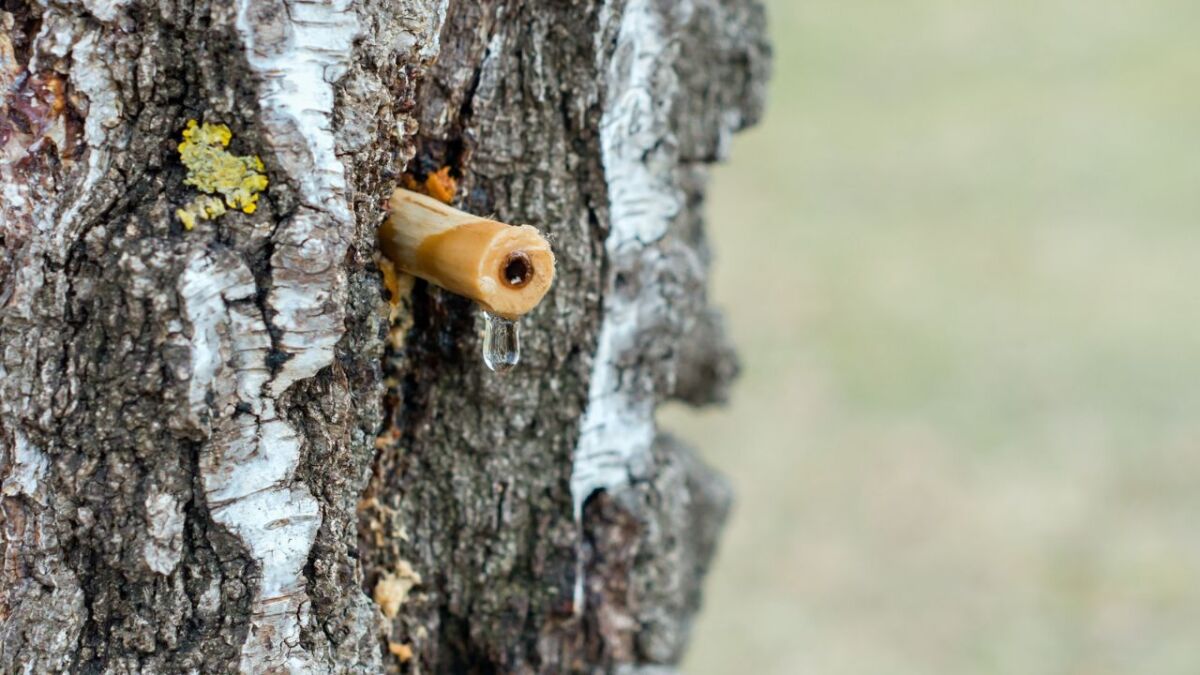
Can I tap trees in Germany to extract sap for syrup?
In Germany, it is not permitted to tap a tree in the forest without permission. This constitutes damage to the tree and is punishable by law.
It is important to note that tapping trees in the forest falls under the forest law, which is regulated by the federal states in Germany. In many federal states, there are regulations about who is allowed to manage the forest and who is not.
If you want to act legally and responsibly, it is crucial that you obtain a permit.
Kindly note that bacteria or fungi can enter the tree at the tapping site and cause the tree to die in the long term.
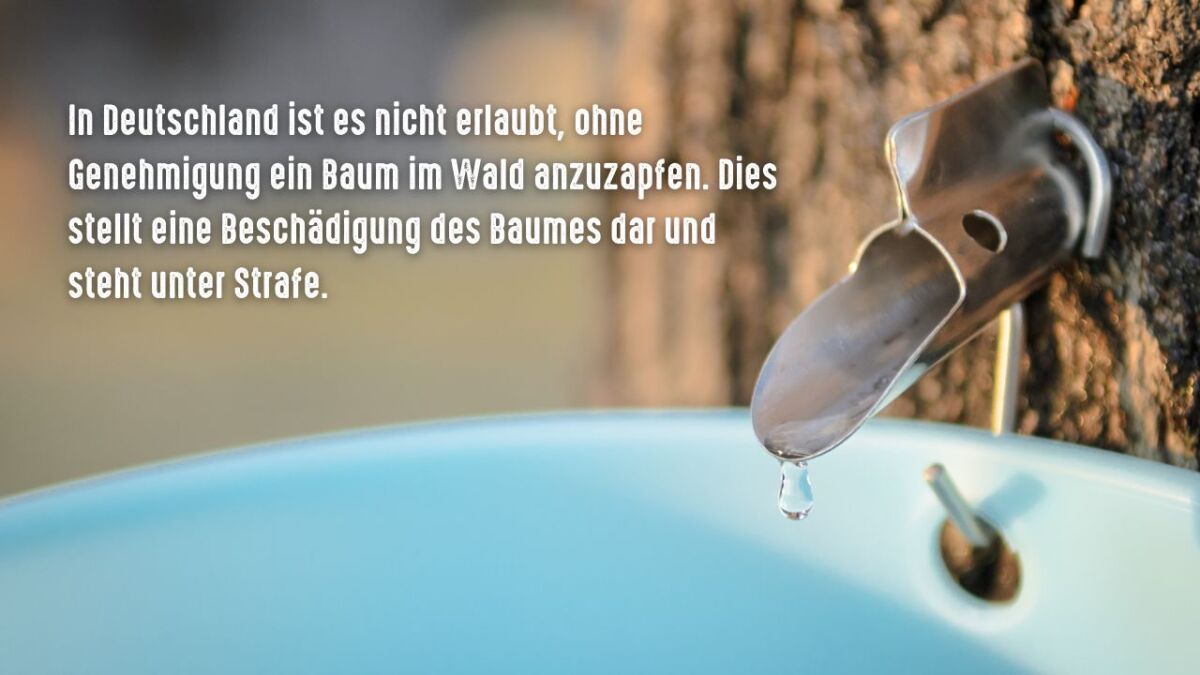
Conclusion
As you can see, these trees are quite remarkable. The usability of birch trees, for example, does not end with sap extraction, but they are considered the ultimate survival tree.
You can use the bark as tinder, for example. But you probably already knew that…
Perhaps I can still tell you something new despite all this. Birch spaghetti also tastes delicious and can serve as food in emergencies. All you have to do is cut the soft skin under the bark of a young birch tree into strips and cook them. Find out more here.
The topic of usable trees could go on and on, but we will end it for today with one last tip.
The time to tap for juice is always when the water is rising in the trees. This can be from February to April. Maple is always earlier than birch. With maple, you should make sure that the buds have not yet burst open.
If you don't have a tapping tool, a nail, and a cup tied to the tree will do to catch the juice.
Naturally, a tap would be the optimal tool for this purpose, but who has that in their luggage in an emergency?
I hope I was able to tell you something today that you didn't already know.


Author of the guide
Martin Gebhardt
Hey, I'm Martin. On my blog, you will learn the basics and numerous details about living in the wild. I think survival, bushcraft and the good life in nature are the keys to happiness. Find me here on Instagram or on YouTube. You can find more about my mission on the About Me page.
Was this guide helpful?
27 people found this guide helpful.
5.00 out of 5 points (27 Ratings)
Comments (0)
This post may contain affiliate links. So if you click on the links and make a purchase, I will receive a small commission at no additional cost to you. Click here, to learn more about it.


